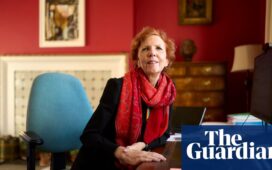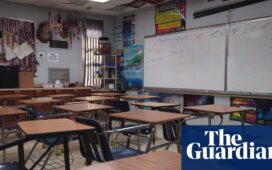Today is Giving Tuesday – a day when those fortunate enough to give financially – make gifts to nonprofits, community-based organizations and causes that inspire action. Many community foundations across the country also align matching campaigns with Giving Tuesday as a way to increase the power of individual gifts exponentially.
When I think about Giving Tuesday – and 2020 – I am reminded of the power of philanthropy. As I learned through a discussion with three of the nation’s foremost education philanthropy leaders, philanthropy can be a powerful tool to create change, scale new approaches and support critical needs. As the reality of the coronavirus pandemic took hold in communities across the nation, philanthropies investing at the intersection of education and economic mobility acted with speed and intentionality to not only ensure the continuity of critical services and programs, but set the stage for systemic impact and reform.

Philanthropy can be a powerful tool to create change, scale new approaches and support critical … [+]
getty
Over the last nine months, some philanthropies launched new initiatives while others revamped strategies in response to new pressures and priorities. I talked with three philanthropic leaders who have a rich history of investing in postsecondary education, workforce development and communities – about their work on the front lines of responding to the global pandemic. They all shared what they believe to be the promise of philanthropy, investment and collaboration amid so much national uncertainty.
“We take three approaches to solve problems: grow, build and change,” said Mike Johnston, President & CEO of Gary Community Investments, a philanthropy based in Colorado with assets divided between a foundation and an S Corporation. “We can identify someone who has developed a solution to a problem and help grow their impact and that solution. We can also identify a problem that exists where there is no solution and we will often build that solution ourselves. And third, if the preconditions don’t allow for us to deliver the results our communities need, we change the preconditions through policy, practice or governance.”
Gary Community Investments responded to the pandemic with this philosophy when they built a platform to respond to the coronavirus in Colorado. With more than 500,000 Coloradans out of work and over a million students out of school, the team at Gary Community Investments recognized no public or private response would single-handedly help restore workers to jobs or students to schools. COVID Check Colorado is the new system used for testing and contact tracing, and over the last month, has conducted over 100,000 tests, helped reopen upwards of 20 schools and 10 higher education institutions statewide.
Coordinated and quick responses can be aided with planning. While no one could have anticipated the magnitude of the coronavirus pandemic, Lumina Foundation, a private Indianapolis-based foundation, had been working on their own crisis management plan at the same time as the pandemic began to impact the U.S.
“Shortly before the pandemic, the team at Lumina Foundation was preparing a crisis management scenario, and we were testing our crisis response in March. Through that exercise, our team realized what was seamless to us as a major philanthropy was not seamless to all of our partners,” said Tim Robinson, Vice President of Administration and Partnerships with Lumina Foundation. “With the onset of the pandemic, we immediately set up a contingency fund knowing that some of our partners were going to be facing financial distress and had time-sensitive needs. We reached out to our partners and offered to be flexible by accelerating payments and changing reporting timelines. And, we honored our financial commitment to many of our partners, who in some instances, were losing financial support from their communities or being asked to return funds.”
Although a national philanthropy, Lumina also responded to local needs. Like many public schools across the country, local elementary and secondary schools across Indianapolis did not have enough laptops or had unreliable internet connections. Learners – both grade school and adults pursuing higher education studies – were left without the equipment or connectivity they needed to complete virtual schoolwork. Lumina supported an Indianapolis-based e-learning fund, created to get hardware in learners’ hands and reliable internet service to all students. Ensuring basic community needs were met became of paramount importance to local and national foundations, alike, but the ability to use data to inform how to distribute resources and support became equally as critical.
“In addition to addressing immediate community needs like food insecurity, Strada Education Network leveraged our Public Viewpoint research to provide real-time data to education, business and policy leaders on how the pandemic is affecting individuals and communities differently,” said Courtney McBeth, Senior Vice President for Strada Impact Operations. “There has been an urgent need to understand the trends among learners and what is happening in communities on the ground, particularly for displaced workers and how they think about education, how they plan to re-skill or up-skill and what resources are needed to support them with a path forward.”
Through research and collaboration with key stakeholders, philanthropic leaders were able to ascertain that sometimes the resources that are needed to support learners and workers could be as simple as a cell phone, or even public television.
“We quickly realized that while everyone may not have access to a computer, they had their cell phone. A group of teachers came together – including retired teachers – and they managed a phone bank,” said Robinson. “Essentially, the creation of a massive call tree could help learners narrow in on a topic and then get the help of the teacher best suited to support their question.”
In Colorado, philanthropic and state leaders determined that the single best market penetration anywhere in the state was through public television. Supported by organizations including Gary Community Investments, the Colorado Education Initiative, Invest in Kids and Rocky Mountain PBS, the new platform Colorado Classroom brought together some of the state’s best teachers to record content – direct instruction to elementary students – and that content was then run on a loop on PBS stations statewide.
“The ability to know there was a quality default option for families who needed content for their young students and that content was offered at no cost – content in literacy and numeracy to kids in any part of the state – was quite an effective patch early on in the pandemic,” said Johnston.
However, funders, policymakers and educators agree: short-term content was – and will be – a patch. The deficits in learning among low-income students and students of color will potentially be catastrophic and as Johnston put it, “could wipe out ten to 15 years of gap closing” that has taken place in the Centennial State.
“Similarly, how does the lapse in learning impact learners in the postsecondary setting?” asked McBeth. “We have already seen declining enrollment during the Fall 2020 semester, across both two- and four-year institutions. At a time of economic instability, when learners should be considering options for reskilling, upskilling and completing credentials, we are instead focusing on how to ensure equity gaps are not exacerbated because of the pandemic.”
Over the last year, Strada Education Network has extended and deepened its relationship with the Jackie Robinson Foundation (JRF) by funding four-year scholarships and mentoring for 12 additional scholars who began college this fall. In partnership with JRF, the objective is to ensure the nation graduates more students of color into high-demand fields and leadership positions across their communities.
The pandemic has illuminated so many structural challenges across our education and workforce systems, our communities, and our policy landscape. But the last nine months have also brought out a sense of optimism, an interest in problem solving and increased collaboration, and a desire to build better ways in which our institutions serve our communities.
Philanthropy – and giving, whether today or any day – will continue to be a critical part of our post-pandemic recovery.
“I think for any dramatic social change, you have to have two things: you have to have truth and you have to have hope,” said Johnston. “This year has forced us to confront the hard truth of where we are as a country. But, I have hope that there is real – and dramatic – evidence for people to find solutions that will deliver different outcomes. Hope proves that we are still capable of solving problems and solving them together.”
The complete discussion with these philanthropic leaders can be accessed here.




